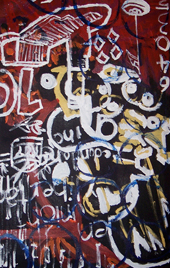Oil giant BP has been in negotiations with UC Berkeley since February on a partnership to research renewable energy technologies, specifically biofuels. BP will provide the university with $500 million over 10 years. The contract was signed a couple of weeks ago on November 14, but the deal remains a controversial one. Two days before the contract was signed Amy Goodman from Democracy Now! hosted an interesting discussion between two UC Berkeley professors with opposing views on the debate. Miguel Altieri is a Professor of Entomology and a renowned expert in agroecology, or sustainable agriculture. He is opposed to the deal between BP and UC Berkeley. Daniel Kammen is a professor in the Energy and Resources Group, as well as professor of public policy and nuclear engineering. He directs the Renewable and Appropriate Energy Laboratory and is on the executive committee of the Energy Biosciences Institute, which will carry out much of the research under the deal. Kammen is generally supportive of the deal. I highly suggest you read the entire transcript of the interview, but here are some excerpts that highlight views on both sides of the story:
AMY GOODMAN: Now, the issue of BP giving this enormous sum of money, $500 million over the next ten years, is this of concern to you, the issue of the privatization of a public institution?
DANIEL KAMMEN: Well, I think that the size of the grant can be a concern, but not for the reasons that you’re raising. I actually think that this amount of money is relatively small change, both for the oil industries around the world and, in fact, for the amount of money it takes to bring new products to market. New cars and new drugs frequently take that much money — half a billion dollars — to bring them to market. And as a research pot of money to start with, I actually don’t regard it as that much money.
The chance, though, that this amount of money would alter what a university does is a concern to me, and the degree to which a university might see grants like this as a reason or as an excuse or as a mechanism to alter what they would work on — say, move away from some areas and move into others — is a concern if it was being done in a way that I thought that the company had that driving force.
MIGUEL ALTIERI: Well, my concerns is that, first of all, Professor Kammen is saying, it’s very little money, and eventually it’s little money for BP, but a lot of money for UC Berkeley. And what they’re going to do with this money is basically skim off what 200 years of public investment has done. It would be very expensive for BP to build a university and a research facility. They will come with $500 million. They skim off what the public university has built over years, and then they bring fifty scientists from BP that are going to have access to students, and so therefore what they’re going to do is influence the research agenda of the public university. And it’s already happening.
And anybody that has protested — faculty — have been basically dismissed and disregarded as a colorful — as part of the colorful character of the campus. You know, we have to have these people that are always protesting.
And what worries me is that, on the one side, they’re promoting the wrong technology: biofuels is the wrong way to go. There’s no discussion, for example, in this proposal about alternative transportation systems, how to curb consumption patterns of petroleum and how to promote other alternatives that are much more viable. And biofuels are going to cause tremendous problems not only in the United States, but in third world countries especially, because if we devoted all the corn that is in this country, 125,000 square miles, we would only satisfy 12% of the gas needs. So obviously what’s going to happen is that it’s going to be grown in the third world, and basically the people in the third world are going to be paying the price for the over-consumption and the old-based style of living of Europe and the United States.
DANIEL KAMMEN: Well, I think there’s a couple really good points in what Miguel just said. The first one is I’m actually, as well, concerned, that I thought that the debate on campus is not one that has been as open as it could be. And you’re right, there has been sort of high-profile protests, but protests and actually having sit-downs between the sides has been somewhat lacking. And I actually really view that as a feature that the campus is responsible for the lack of that, not BP so far, and the campus needs to do a better job in that regard.
In terms of the fuel issues around the world, I actually take quite a different view than that by Miguel. It is true that if we devoted all of our corn to making ethanol in the US, we would only reach about 10% or 12%, so it wouldn’t be a significant effort, and you wouldn’t want to give up all that corn use for ethanol. But an interesting and, I think, a critical feature of the BP proposal is that, in fact, corn ethanol is excluded. Everyone who works on ethanol and biofuels worldwide recognizes that alternate fuels are available that are far better, the so-called cellulosic crops, that even include using garbage and using the waste carbon dioxide that comes out of power plants on just the land sitting next to those power plants. Those are areas for research in this proposal, not corn.
And so, if there was to be an approach that would look at alternatives that did not make the tension between food and fuel worse, it’s a project like this. In fact, in many parts of the developing world, the potential to grow crops that are useful for farmers locally at much higher efficiencies than they draw today — for food stocks, again, not corn — is an option that this proposal should be looking at. And the degree to which we do a good job there, I think, is very much due to the sort of things that Miguel said, and that is having this broader discussion and analysis not only of what we should be doing, but also how it goes on.
MIGUEL ALTIERI: I think what we need is, first of all, is to call again for an open debate, which has been suppressed, because basically the people that were questioning this have been accused of attempting against academic freedom. And basically what academic freedom now means in Berkeley is just that you cannot question the financial associations of faculty.
I mean, we need to look at the record of BP. We cannot associate with BP. It has a horrible record in terms of environment, in terms of human rights, and so on. And they have been, you know, destroying the environment for many years, and now they come as the doves of ecology.
We need to also put in place people that are going to be looking critically at the social, ecological impacts. We cannot leave in charge climate change and ecological questions to a bunch of engineers and chemists and genetic engineering people. We need to bring ecologists, social scientists, but also that are critical and are independent, that are not associated with this proposal and therefore open to debate, and also bring the public of California to question their public university that is being funded by them. They need to reclaim their university, their public university.
My question is: How many universities is BP trying to infiltrate? They have also recently teamed up with researchers at the Biodidesign Institute at Arizona State University to learn more about using cyanobacteria as a biofuel feed stock. Don’t get me wrong, it is nothing new for companies to be teaming up with universities to do research, but the sheer scale and influence of a mega-company like BP changes the dynamic of the game. It may be inevitable that the oil giants will take over the biofuels industry, if only by brute force, but is it necessary, or even allowable, that they take over our universities and intellectual freedom as well?










